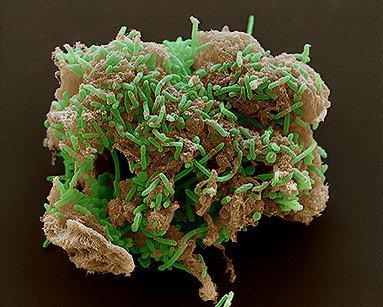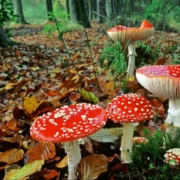Fact: Scientists have found a rare species of bacteria that ‘breathes’ uranium uses and thrives in abandoned uranium ore processing sites. It goes without saying that these are, by far, the world’s smallest uranium producers!

They are part of the class of strain, Betaproteobacteria, an aerobic species that is highly versatile in their degradation process and play a role in nitrogen fixation in plants. It was located in the soil at an old natural uranium ore mill in Rifle, Colorado. They thrive in abandoned raw uranium ore processing sites. In an explanation produced by PLOS One, the bacteria remove a spare electron from the uranium in a process dubbed, ‘reduction.’ Scientists are looking at the change in state for stability. If so, this could yield a new means by clearing up uranium-polluted sites in an efficient manner.
How this brand of bacteria arose is still highly unknown. But many scientists speculate it follows the same process in which bacteria become resistant to antibiotics. The only difference is that this specific species of bacteria “picked up a genetic element that is now allowing it to detoxify uranium, to actually grow on uranium” said Professor Lee Kerkhof.
So, what happens to the uranium after bacteria is finished with it? After the bacteria interact with the uranium in water, the compound becomes inactive. It can no longer be dissolved in the groundwater and cannot contaminate drinking water. This has a huge impact because small traces of uranium are found in armor piercing ammunition. Places like the Middle East would be exposed to high levels of uranium in the groundwater.”
References:
- Gallois, N., Alpha-Bazin, B., Bremond, N., Ortet, P., Barakat, M., Piette, L., Mohamad Ali, A., Lemaire, D., Legrand, P., Theodorakopoulos, N., Floriani, M., Février, L., Den Auwer, C., Arnoux, P., Berthomieu, C., Armengaud, J., & Chapon, V. (2021). Discovery and characterization of UipA, a uranium- and iron-binding PepSY protein involved in uranium tolerance by soil bacteria. The ISME Journal, 1–12. https://doi.org/10.1038/s41396-021-01113-7
- Bacteria Use Radioactive Uranium To Convert Water Molecules To Useable Energy. (n.d.). ScienceDaily. Retrieved January 30, 2022, from https://www.sciencedaily.com/releases/2006/10/061019192814.htm
- These bacteria leave dangerous uranium “immobile.” (2015, June 17). Futurity. https://www.futurity.org/uranium-bacteria-943732/


